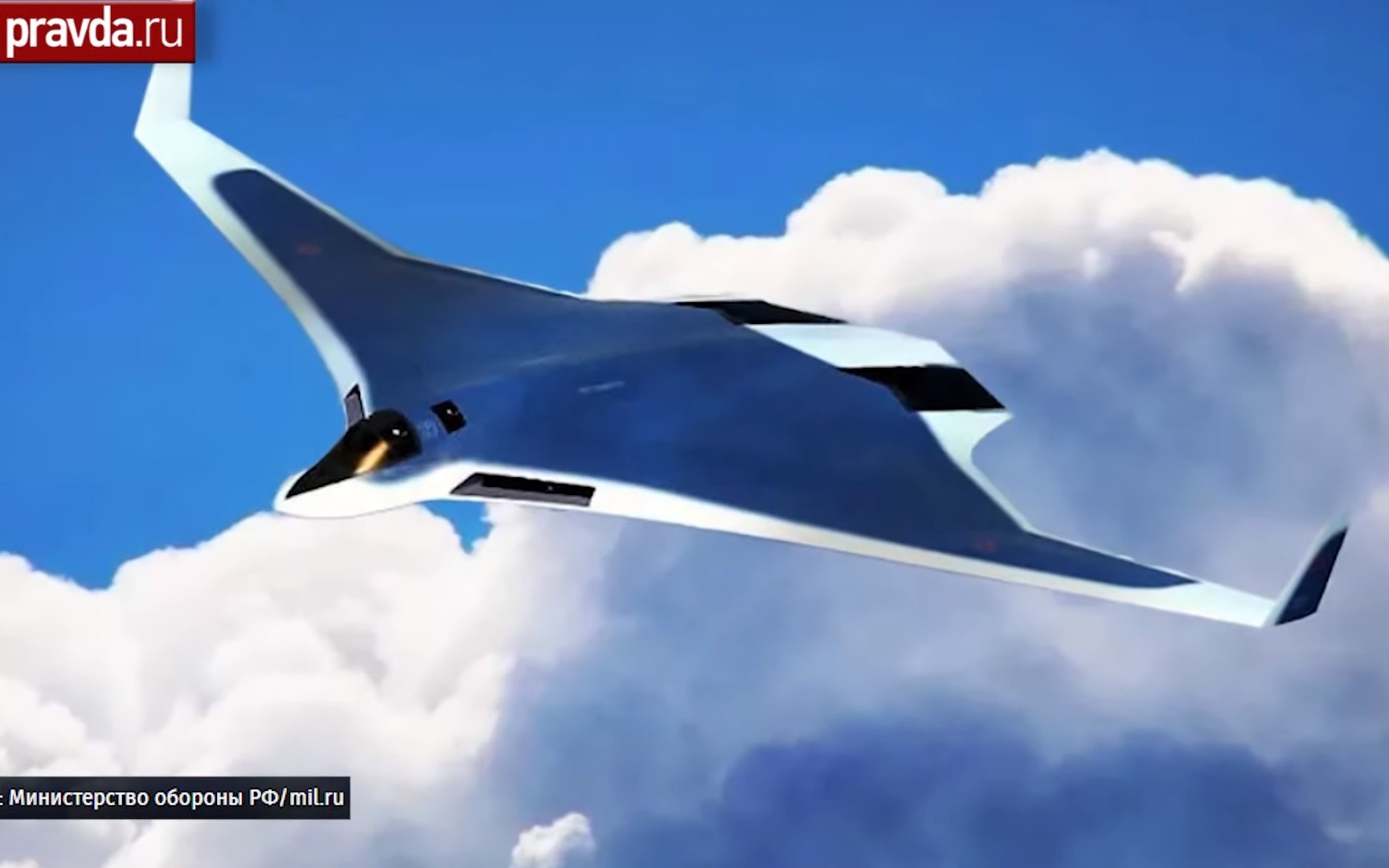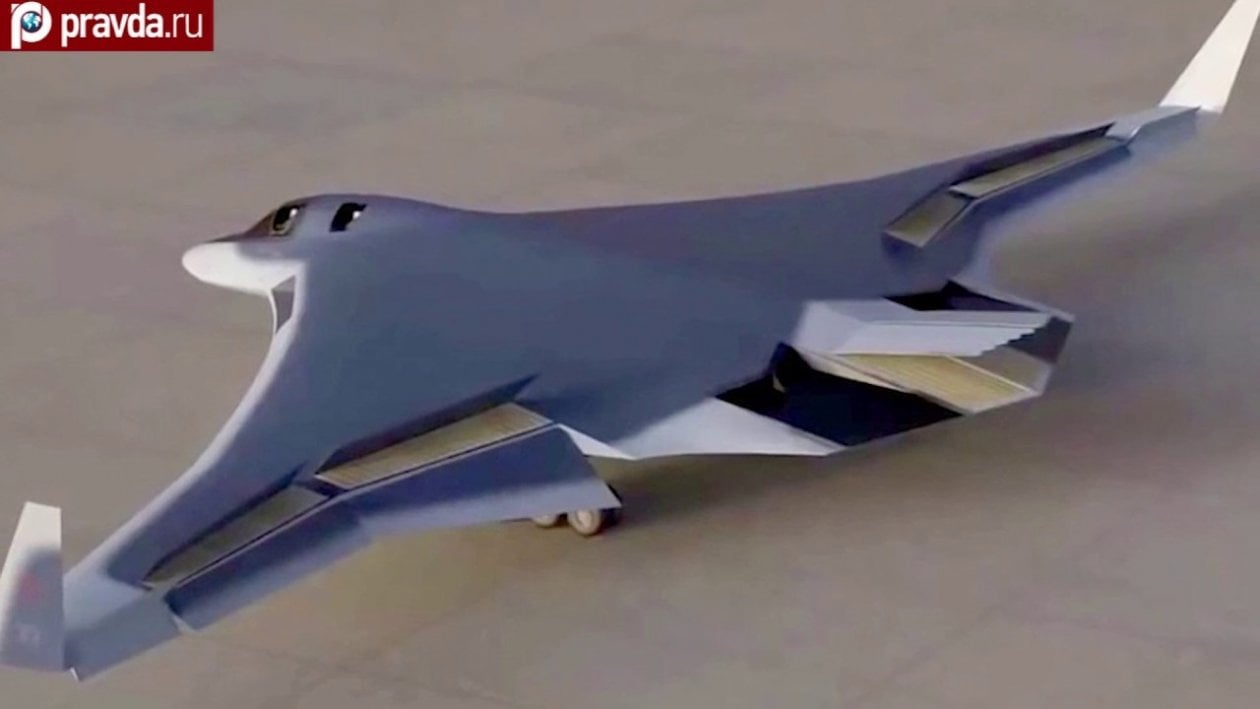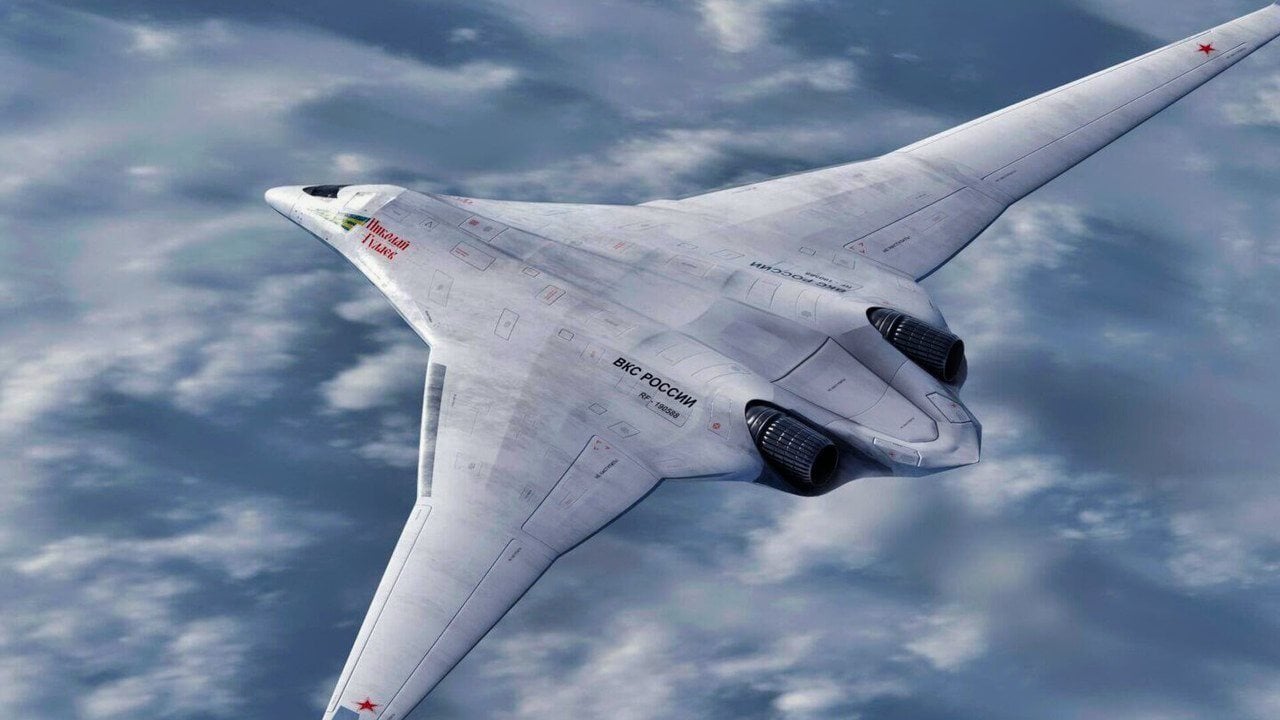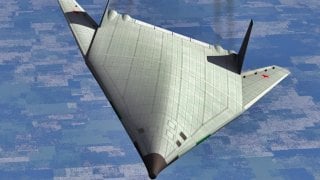Russia's 'B-21 Raider': The PAK DA Stealth Bomber Will Fail in 2 Words
Russia’s long-delayed Tupolev PAK DA bomber, codenamed “Poslannik,” aims to replace aging bombers like the Tu-95 Bear. Although slower than other bombers, the PAK DA focuses on advanced stealth capabilities and can carry nuclear payloads and hypersonic missiles.
Won't Happen?: Russia’s long-delayed Tupolev PAK DA bomber, codenamed “Poslannik,” aims to replace aging bombers like the Tu-95 Bear. Although slower than other bombers, the PAK DA focuses on advanced stealth capabilities and can carry nuclear payloads and hypersonic missiles.

-However, its development has faced consistent setbacks since 2007, compounded by engine issues and resource diversions to the Ukraine conflict.
-With deployment expected by 2027, Russia faces a growing strategic gap as U.S. and Chinese stealth bombers advance. Despite delays, Russia may prioritize the PAK DA, driven by necessity in an increasingly competitive global arms race. However, Moscow has a long history of making big military platform claims and never delivering.
Codenamed “Poslannik,” (which means “envoy” or “messenger” in Russian), Russia’s Tupolev PAK DA bomber is the Russian Aerospace Forces’ newest toy. It is a long-range, stealth strategic bomber that is intended to ultimately replace the aging Tu-95 Bear bomber. The Poslannik has a projected range of 12,000 km (7,500 miles) and can stay airborne for 30 hours while carrying a nuclear payload.
Russia’s new warbird is a bit of a slowpoke. It cannot reach supersonic speeds. But, according to the designers of the Tu PAK DA, their emphasis was less on speed and more on stealth capabilities.
In fact, the plane’s designers have argued that the plane’s slower speed allows it to carry a larger payload package that not only includes nuclear weapons, but Russia’s innovative hypersonic missiles. The Poslannik bomber is rumored to have a payload capacity of 30 tons, which exceeds the US Air Force’s B-2 stealth bomber maximum payload capacity. In fact, the PAK DA bomber has elements that stealth plane geeks would recognize from America’s B-2 stealth bomber plane.
Like American stealth bombers, the Russian Tu-PAK DA is commanded by a powerful suite of sophisticated computers that do everything from maintaining flight control to monitoring enemy movements.
The PAK DA Looks Like a Marvel Comic Book Villain’s Plane
The Tupolev designers believe that the PAK DA’s superior stealth technology coupled with its ability to launch hypersonic payloads negates the need to outrun enemy air defenses. Although, it should be noted that a persistent problem in Russian bomber design has been its engines. When Tupolev designed the Tu-95, for example, they opted to make the long-range nuclear-capable bomber a turbo-prop-driven plane rather than a turbojet-driven plane, as the American B-52 Stratofortress is.

It is possible that the Russians are again having issues with their engines for this new, fifth-generation stealth bomber and they are simply opting out of acquiring more powerful engines altogether.
Looking like something that a Marvel Comic book villain would fly, the Tupolev PAK DA is probably Russia’s best attempt at employing stealth technology. I say “probably” because the warbird has yet to take flight. Russian sources report that Moscow plans to deploy the Tu-PAK DA Poslannik in service at some pointbetween now and 2027, with most acknowledging that it’ll be closer to 2027. The issue at hand for Russia is the longer the stealth bomber’s deployment is delayed, the greater the capabilities gap exists in Russia’s offensive air capabilities.
In the meantime, the Russians have upgraded their Tu-160 “White Swan” bombers to continue fulfilling mission critical roles. Although, these planes are not of the fifth-generation series and, therefore, Moscow wants to ultimately place the Tu-PAK DA’s as their lead bomber in today’s age of anti-access/area denial (A2/AD) warfare. This has led to some speculation in the West that the Tu-PAK DA Poslannik will never fly.
After all, it has been in development since 2007.
Faced with delays for 17 years (and still counting), whatever progress has been made on the planes, now that the Ukraine War has erupted and is diverting considerable Russian resources away from such projects, like the Tu-PAK DA bomber, one can anticipate more delays.

The PAK DA is Not Ready for Showtime
The Russians have been lying for a few years about how far along they are with the Tu-PAK DA’s development. After all, the Russians were supposed to have a demonstration plane ready for use by 2023. Now, Russia’s defense ministry says it won’t be until next year, two years after it was originally supposed to be ready for use, that a demonstration Tu-PAK DA will be available.
And the longer the delay lasts for the deployment of the Tu-PAK DA, the greater the capabilities gap is for Russia’s air force. Not only have the Americans outpaced the Russians with the recent successful demonstration of the B-21 bomber, but the Chinese have gotten their own long-range stealth bomber, the H-20, which Beijing claims can “out-bomb” US Air Force facilities in the Indo-Pacific.
One thing that is working in Russia’s favor is the fact that the Ukraine War has forced its manufacturing sector to go on a war-footing—where it will likely remain for some time to come.
Will Russia Be Able to Keep Up with Stealth Planes?
Still, Russian aerospace firms are having difficulty meeting increased demand for their products. This has especially been felt in the Su-35 series, a “fourth-generation ++” warplane. Nevertheless, the Russians have remained in the fight. What’s more, as I have noted previously, the Russians are winning and are likely to defeat Ukraine (and their NATO backers) simply through attrition.
Inevitably, the Russians will have to prioritize the creation of their Tu-PAK DA bomber.
Otherwise, they will have left a significant strategic gap for the Americans to fly through with their B-21.
As an American, I hope this remains the case. Although, after two years of the Ukraine War, the Americans should learn never to underestimate the Russians. Theirs is a society that is compelled by necessity, the kind of necessity that total war brings. At some point, they’ll get the Tu-PAK DA right.
About the Author
Brandon J. Weichert, a National Interest national security analyst, is a former Congressional staffer and geopolitical analyst who is a contributor at The Washington Times, the Asia Times, and The-Pipeline. He is the author of Winning Space: How America Remains a Superpower, Biohacked: China’s Race to Control Life, and The Shadow War: Iran’s Quest for Supremacy. His next book, A Disaster of Our Own Making: How the West Lost Ukraine, is out now from Encounter Books. Weichert can be followed via Twitter @WeTheBrandon.
All images are Creative Commons.


